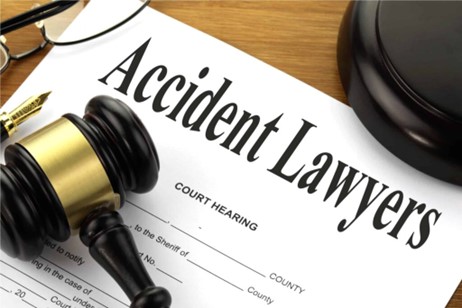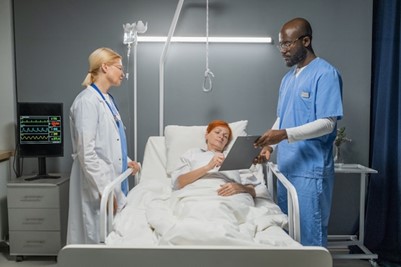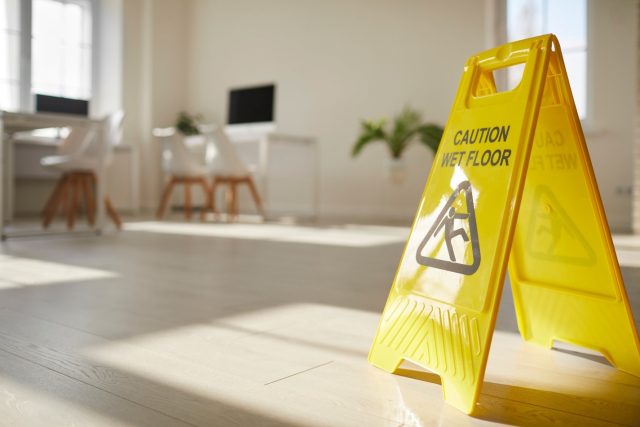Leonard Keith Hill, the Managing Partner and Lead Trial Attorney at Hill & Associates, has spearheaded the recovery of over $250 million in client settlements. He is also a member of both the American Association for Justice and the Philadelphia Trial Lawyers Association. In the following article, Leonard Hill delves into the intricacies of slip and fall cases, showcasing how adept legal representation can translate into significant financial restitution.
Slip and fall accidents, commonly brushed off as minor occurrences, wield a considerable impact on the landscape of personal injury claims each year within the United States. Despite their seemingly innocuous nature, these incidents harbor the potential to inflict a spectrum of injuries, spanning from fractures to grave, life-altering conditions such as traumatic brain injuries. Beneath the surface of these seemingly mundane events lies a labyrinth of complexities, particularly in establishing negligence, which is pivotal in seeking legal recourse.
Navigating slip-and-fall litigation demands a keen understanding of the multifaceted dynamics at play. From assessing the property owner’s duty of care to scrutinizing the circumstances surrounding the accident, each facet of the case requires meticulous attention and strategic acumen. Moreover, Leonard Hill notes that the stakes are heightened by the substantial settlements or verdicts that may ensue from successful litigation, underscoring the critical importance of slip-and-fall cases within personal injury law.
Slip and fall litigation serves as a vital avenue for individuals seeking justice and restitution in the wake of debilitating accidents. It is a realm where legal expertise intersects with the pursuit of accountability, offering a pathway for victims to reclaim their rights and receive the compensation they rightfully deserve.
Leonard Hill Outlines Slip and Fall Incidents
A slip-and-fall accident occurs when an individual falls and sustains injury due to a slippery or unsafe condition on someone else’s property. Leonard Keith Hill explains that these accidents can happen anywhere, but are most common in grocery stores, shopping malls, restaurants, and office buildings. Under premises liability law, property owners have a duty to maintain their premises in a reasonably safe condition or warn of dangers that may not be obvious to visitors.
 The Legal Framework
The Legal Framework
At the heart of any slip and fall lawsuit lies the pivotal task of demonstrating negligence attributable to the property owner. This burden entails showcasing that the property owner possessed knowledge or should have reasonably been aware of the hazardous condition yet neglected to address it or adequately caution visitors. Leonard Keith Hill delves into the intricate nuances of this process, illuminating the formidable challenge of delineating what constitutes a reasonable course of action in comparable circumstances.
Proving Negligence
Leonard Hill explains that establishing negligence in slip and fall cases hinges on several factors:
- The Existence of a Hazardous Condition: Plaintiffs must first prove that a hazardous condition existed. This could be anything from a wet floor without a sign to uneven flooring or a poorly lit staircase.
- Knowledge of the Hazard: It must be shown that the property owner knew or should have known about the danger. This knowledge can be actual (direct knowledge) or constructive (should have known by reasonable inspections).
- Causation: The dangerous condition must be directly related to the accident. The plaintiff must prove that the injury was a result of the hazard on the property, not because of another reason.
- Damages: Finally, it must be demonstrated that the fall resulted in actual damages. This could include medical bills, lost wages, pain and suffering, and other losses.
Gathering Evidence
In slip-and-fall claims, the efficacy of legal recourse hinges profoundly on the caliber and abundance of evidence presented. Leonard Hill underscores the critical significance of assembling a robust evidentiary foundation, elucidating key elements pivotal to the success of these cases:
- Photographic or video documentation capturing the scene promptly following the incident serves as invaluable evidence, vividly illustrating the hazardous condition that precipitated the fall. These visual records provide compelling visual testimony, offering irrefutable proof of the perilous circumstances at hand.
- Witness statements represent a cornerstone of corroborative evidence, bolstering the plaintiff’s narrative of the events leading up to the accident. Testimonies from individuals who observed the incident unfold firsthand lend credence to the plaintiff’s account, fortifying the case against potential challenges.
- Incident reports, if filed with the property owner or manager subsequent to the accident, constitute crucial documentary evidence. These official records serve to validate the occurrence of the incident and may shed light on the property owner’s awareness or lack thereof regarding the hazardous condition.
- Medical records stand as incontrovertible evidence, establishing a direct correlation between the injuries sustained with the fall. Detailed medical documentation, including diagnoses, treatment plans, and prognosis, corroborates the plaintiff’s assertions, substantiating the extent of harm inflicted.
In essence, the compilation of compelling evidence is pivotal in navigating the complexities of litigation, serving as a linchpin in securing favorable outcomes for injured individuals seeking rightful restitution. Through meticulous documentation and strategic presentation of evidence, legal practitioners seek to vindicate the rights of victims and hold accountable those responsible for their injuries.
 Potential Challenges
Potential Challenges
Slip and fall cases are not always straightforward. Defendants and their insurers often argue that the plaintiff was at least partially responsible for the accident. Many states have comparative fault rules that reduce the compensation by the percentage of fault attributed to the injured party.
For instance, should a court determine that a plaintiff bears 30% liability for an accident, the awarded settlement would correspondingly diminish by the same percentage. Leonard Hill points out that another common defense is the ‘open and obvious’ doctrine, where it is argued that the danger would have been clear enough to a reasonable person, such that the plaintiff should have avoided it.
Possibility for Large Settlements
Despite the complexities, successful slip and fall cases can result in significant settlements or verdicts, particularly when the injuries are severe. Leonard Keith Hill explains that in cases involving permanent disability or life-long medical care, the compensation may reach into the millions. Factors that influence the size of a settlement include:
- Severity and permanence of the injury.
- Impact on quality of life, as well as ability to work.
- Past and future medical expenses.
- Non-economic damages, such as pain and suffering.
High-Profile Cases
There have been several high-profile slip and fall cases with substantial verdicts. For example, a jury in Nevada awarded $16.4 million to a 59-year-old man who suffered a traumatic brain injury after falling due to a slippery floor at a casino. Cases like this highlight the potentially high stakes involved in premises liability claims.
Conclusion
Slip and fall litigation remains a dynamic and challenging field within personal injury law. These cases underscore the importance of property owners maintaining their premises and strictly adhering to safety standards in order to prevent accidents. For plaintiffs, understanding the complexities of proving negligence is crucial. Legal professionals specializing in this area must meticulously prepare their cases, often facing formidable opposition from property owners and insurance companies ready to contest liability. Leonard Keith Hill emphasizes that as these cases can result in substantial compensation for the injured, they serve as a critical reminder of the responsibilities of property owners and the rights of visitors to their premises.








